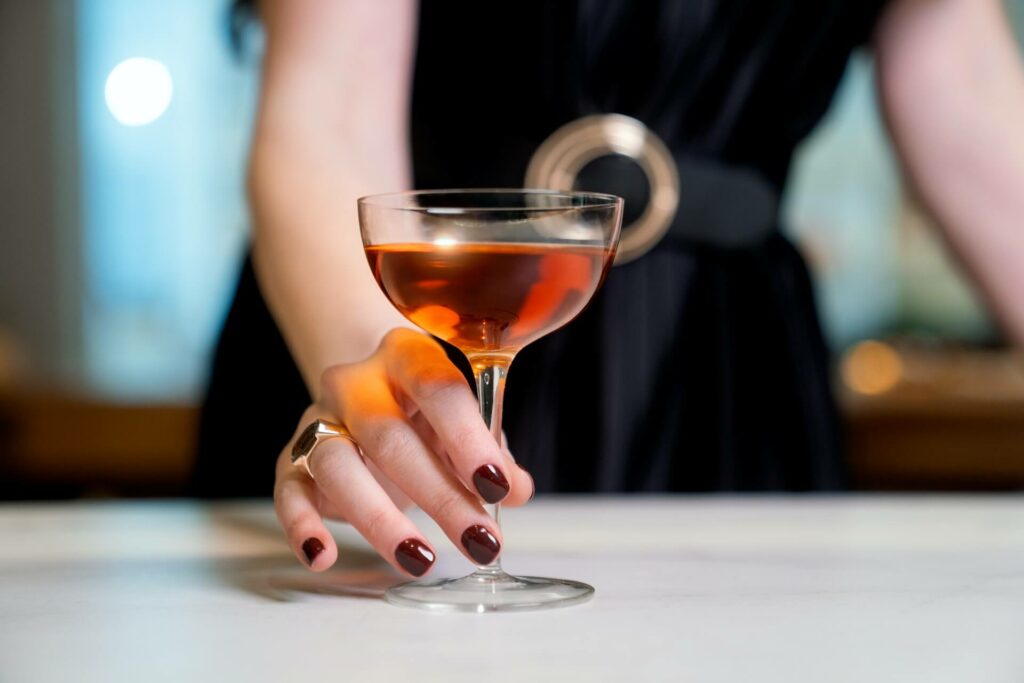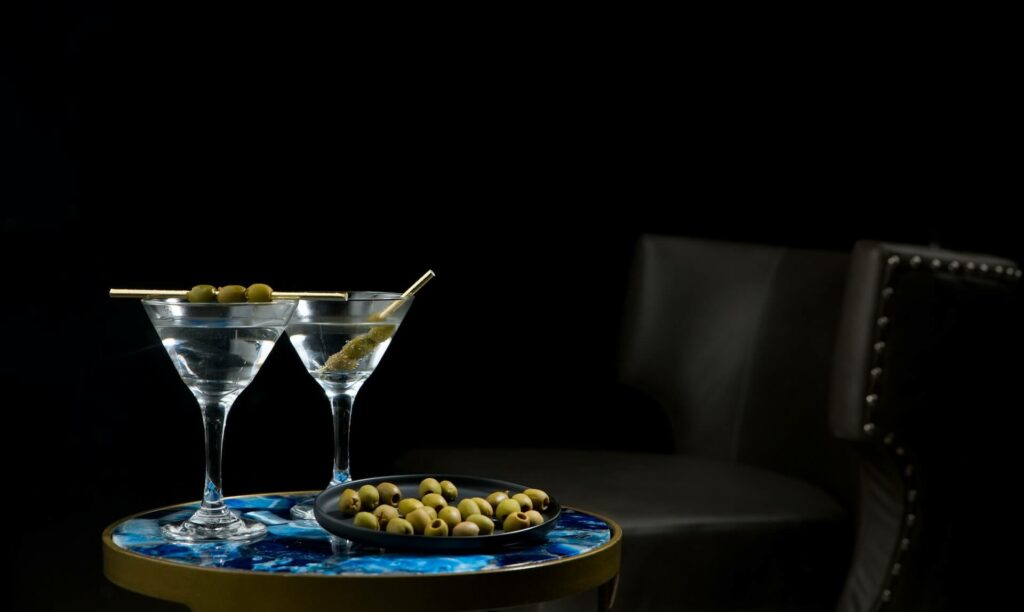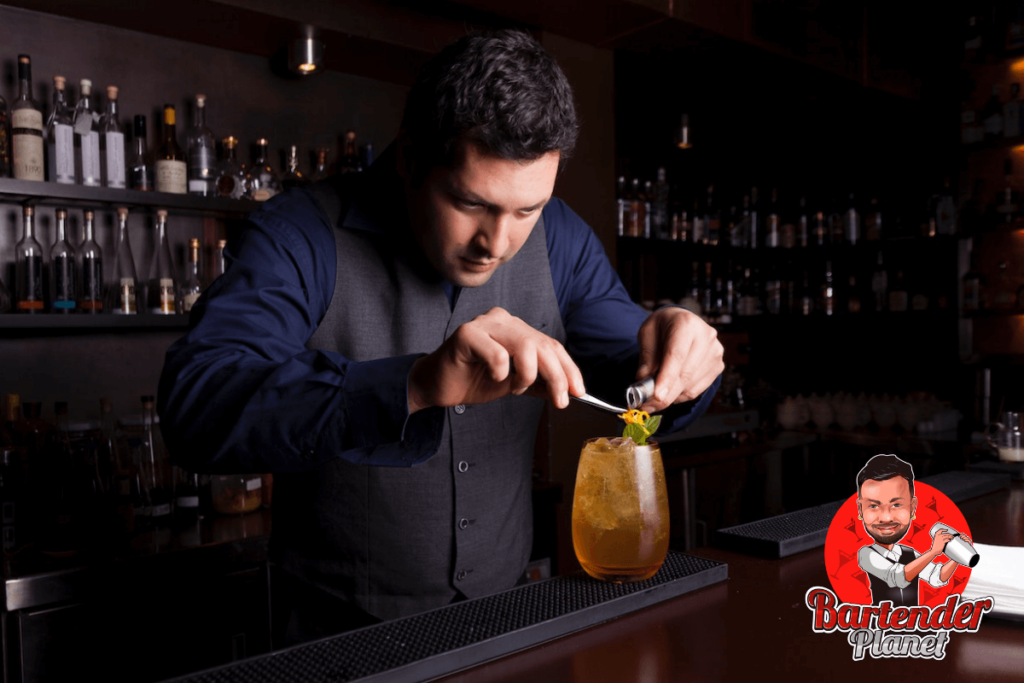Ever heard a bartender use the term “perfect” and wondered what they meant? You wouldn’t be the first.
It’s not just about a drink made without errors or a bartender’s top-notch skills. Instead, it’s a term with its own distinct definition that many casual drinkers might not be aware of.
In this post, you’ll discover the deeper layers of what makes a cocktail truly “perfect.” So, the next time you’re at a bar, you’ll have a fun tidbit to share.
Ready to learn the true meaning of “perfect” in bartending?
Let’s get into it…
What Does It Mean To Serve A Drink Perfect?
When a drink is ordered “perfect,” it typically refers to a specific ratio of sweet and dry vermouth in a cocktail, most commonly in martinis and Manhattans.
A “perfect” martini or a “perfect” Manhattan means that the drink is made with equal parts of sweet and dry vermouth, rather than using just one type.
Vermouth, a fortified wine flavored with various botanicals, comes in two primary types: sweet, which is often red, and dry, which is usually clear or pale.

Each type brings its own flavor to a cocktail. A “perfect” cocktail, such as a “perfect” Manhattan, is crafted with equal parts of sweet and dry vermouth.
This results in a blend where the sweetness of the sweet vermouth is balanced by the sharpness of the dry vermouth and I have to say, it’s delicious.
It’s a drink that sits right in the middle of the flavor spectrum, neither veering too sweet nor too dry.
>> Read more: What Does Up Mean In Bartending?
Why Are Some Drinks Served Perfect?
Serving a drink “perfect” is done to achieve a harmonious flavor balance.
By blending both sweet and dry vermouth, bartenders aim to create a cocktail that strikes a delicate middle ground, ensuring the drink isn’t overwhelmingly sweet or excessively dry.
This approach not only introduces an added layer of complexity to the drink but also allows the primary spirit’s nuances to shine through in unique ways.
Historically, certain classic cocktail recipes have called for this “perfect” mix, and these traditions have been handed down through generations, cementing their place in mixology.
Not only that but as bartenders continually evolve and experiment with their craft, the “perfect” method offers a way to reinterpret and refresh traditional recipes.
It’s all about catering to diverse tastes and preferences, ensuring that customers can enjoy a drink that’s both familiar and innovative.
There’s something for everyone in bartending, and “perfect” drinks are a fine example of that.
>> Read more: What Does Bruising Mean In Bartending?
The Origins Of Perfect Cocktails
The term “perfect” in the context of cocktails is deeply rooted in the history of mixology and the evolution of vermouth.
Vermouth found its origins in Europe. The word “vermouth” itself is derived from the German “Wermut,” signifying wormwood, a key ingredient in its early formulations.
As vermouth sailed from European shores to America in the late 18th and early 19th centuries, it quickly became a beloved ingredient in the flourshing cocktail scene.

During what many consider the “Golden Age of Cocktails” in the late 19th and early 20th centuries, classic drinks like the martini and Manhattan emerged.
Bartenders, in their quest to perfect these concoctions, began adjusting the ratios of sweet to dry ingredients.
It was in this experimental phase that the term “perfect” was coined. When a drink was crafted with an equal blend of sweet and dry vermouth, it was labeled “perfect,” denoting its balanced nature.
The Prohibition era in the U.S., spanning from 1920 to 1933, posed challenges for mixologists.
With a decline in the quality of available spirits, bartenders leaned heavily on mixers like vermouth to camouflage the taste of subpar alcohol.
As Prohibition ended and the quality of spirits saw a revival, the art of mixology experienced a renaissance. The tradition of “perfect” cocktails, with their harmonious blend of sweet and dry, found its place in this renewed landscape.
Today, with the modern cocktail renaissance, the “perfect” cocktail stands as a symbol of mixology’s rich history and the enduring appeal of a well-balanced drink.
>> Read more: What Does Neat Mean In Bartending?
More On Perfect Drinks
The “perfect” cocktail is influenced by a number of factors that extend beyond its basic ingredients.
In places like Japan, the crafting of cocktails is an art form that focuses on precision and balance, mirroring the ethos of the “perfect” cocktail, even if the terminology differs.
The meticulous attention to detail in such cultures can offer a fresh perspective on what balance truly means in a drink.
The experience of savoring a “perfect” cocktail isn’t solely about the liquid itself. The choice of glassware, often overlooked, plays a pivotal role.
A stemmed glass, for example, can maintain the temperature of the drink, ensuring that the balance remains undisturbed by external factors like the warmth of one’s hand.

With modern drink producers experimenting with diverse botanicals, the definition of “perfect” is continually being reshaped.
These new flavor profiles allow bartenders to explore new territories of balance, reimagining classic recipes.
Also, the interplay between food and drink is an age-old dance. A “perfect” cocktail, with its harmonious profile, can be the perfect companion to certain dishes, enhancing and complementing flavors in a way that a more skewed drink might not.
Over time, societal tastes have shifted. Recent years have seen a trend towards drier drinks, making the “perfect” cocktail an appealing choice for those seeking a middle ground.
Final Thoughts
As you now know, the “perfect” cocktail has a long history, from old European recipes to today’s bars worldwide.
It’s all about mixing sweet and dry flavors just right to create delicious cocktails. As drink makers keep trying new things, this balanced drink remains a favorite.
So, next time you’re choosing a drink, think about the “perfect” mix.
It’s a special blend of old and new, and it’s always a good choice, especially if you’re a Manhattan or Martini drinker.
See you in the next one!


